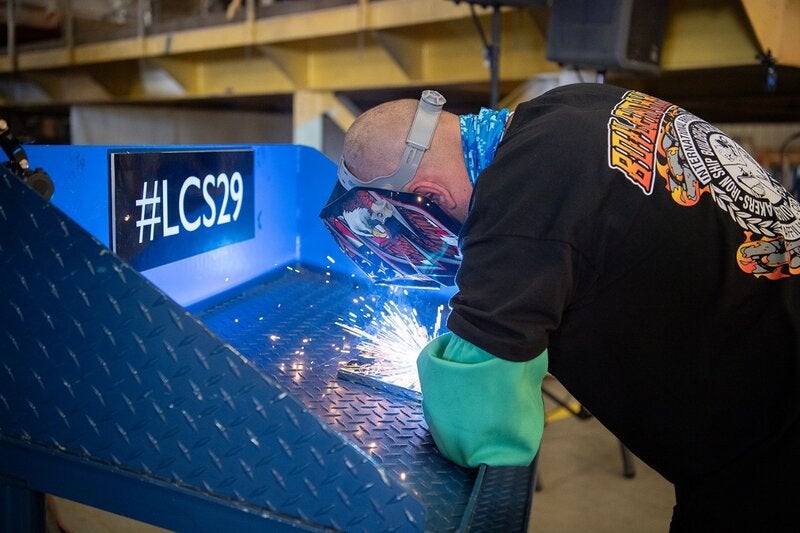
Lockheed Martin and Fincantieri Marinette Marine have commenced construction on the US Navy’s future USS Beloit Littoral Combat Ship (LCS) 29.
The start of construction on the 15th Freedom-variant LCS 29 was marked by a ceremony in Marinette.

Discover B2B Marketing That Performs
Combine business intelligence and editorial excellence to reach engaged professionals across 36 leading media platforms.
During the ceremony, the initials of the sponsor of the vessel were welded onto a keel plate that was affixed to the ship.
Once constructed, LCS 29 will join over 30 sister ships.
To date, the US Navy has deployed four Freedom-variant LCS to support its peacekeeping missions.
LCS is designed to deliver advanced capability in anti-submarine, surface and mine countermeasure missions.

US Tariffs are shifting - will you react or anticipate?
Don’t let policy changes catch you off guard. Stay proactive with real-time data and expert analysis.
By GlobalDataLed by Lockheed Martin, the team has partnered with the US Navy to upgrade the LCSs to defend against evolving threats.
To support upcoming deployments, the vessels are undergoing upgrades, with the installation of naval strike missiles.
The ships will be installed with improved electronic warfare and decoy launching systems.
There are currently six LCSs, including USS Beloit, under different stages of construction and testing at the Fincantieri Marinette Marine shipyard.
Earlier this year, USS Detroit (LCS 7) conducted missions with US Navy destroyer and Coast Guard teams in the US Southern Command Area of Responsibility.
Lockheed Martin Small Combatants and Ship Systems vice-president and general manager Joe DePietro said: “With two deployments so far this year, Freedom-variant LCS have proven that they are capable and can serve a unique role in the US Navy’s fleet.
“LCS speed, manoeuvrability and flexibility allows the ship to serve a multitude of missions by quickly integrating equipment and deploying manned and unmanned aerial, surface or sub-surface vehicles.”





